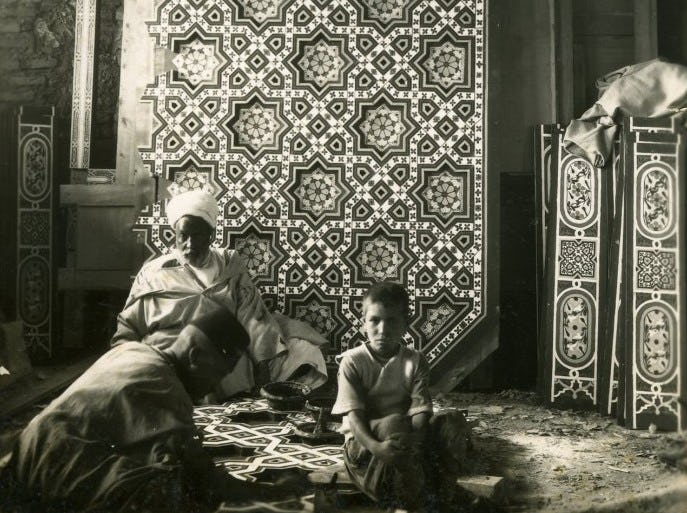Polychrome Iznik Tile Panel with Cloud Bands and Floral Motifs
Date17th century
PeriodOttoman
MediumStonepaste, polychrome pigments
DimensionsEach tile: 10 x 10 in. (25.4 x 25.4cm)
ClassificationsCeramics
Object number48.1a
DescriptionThe walls of the foyer are covered in about 185 painted ceramic tiles adorned with red and blue flowering plants and turquoise cloudband motifs against a white ground. Swirling stems end in feather-like saz leaves with serrated edges. This composition is lined with a border of elongated tulips weaving around other flowers and cartouches filled with floral motifs. Iznik ceramics originated in the town of Iznik in present day Turkey in the late 1400s. Potters of Iznik produced white, stonepaste vessels painted with designs in sage green, cobalt blue, turquoise, and manganese purple under a glossy, transparent glaze. In the mid-1500s, the Ottoman emperor, Suleyman the Magnificent (r.1520 to 1566), commissioned prominent buildings clad in colorful Iznik tile. A bright tomato red was added to the Iznik palette to make the designs more vibrant when viewed from afar. This bold red color, a slip made from iron-rich clay called Armenian bole, was eventually applied to Iznik vessels (examples are on display in the Ottoman Gallery: 48.24 and 48.25). During the 1500s, a realistic floral style — of tulips, hyacinths, carnations, and other flowers — developed, appearing on every form of Ottoman art, from ceramics to textiles.
On View
On view16th - 17th century
16th - 17th century
16th - 17th century










